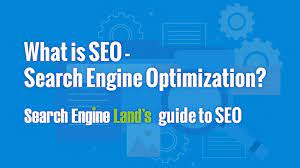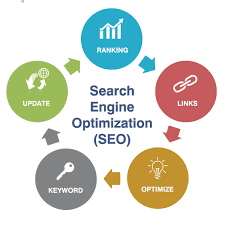SEO and SEM: Understanding the Key Differences
Search Engine Optimization (SEO) and Search Engine Marketing (SEM) are two vital components of digital marketing that play a crucial role in enhancing a website’s visibility on search engine results pages (SERPs). While both aim to increase online presence and drive traffic to websites, they differ in their approaches and strategies.
SEO: Enhancing Organic Visibility
SEO focuses on optimizing a website’s content, structure, and technical elements to improve its organic (unpaid) visibility on search engines. This involves keyword research, on-page optimization, link building, and other tactics aimed at improving the website’s ranking for specific search queries.
Key aspects of SEO include creating high-quality content that resonates with the target audience, ensuring proper website structure for easy navigation by search engine bots, and obtaining backlinks from reputable sources to boost authority.
SEM: Paid Advertising for Instant Results
In contrast, SEM involves paid advertising efforts to increase a website’s visibility on SERPs through techniques such as pay-per-click (PPC) campaigns. SEM allows businesses to bid on keywords related to their products or services and display ads prominently in search results or on relevant websites.
SEM offers immediate visibility and can generate quick results compared to SEO. It provides businesses with greater control over ad placements, targeting options, and budget allocation to reach their desired audience effectively.
The Synergy Between SEO and SEM
While SEO and SEM have distinct approaches, they can complement each other effectively in a comprehensive digital marketing strategy. By combining organic SEO efforts with targeted SEM campaigns, businesses can achieve maximum visibility across both organic and paid search results.
Striking the right balance between SEO and SEM allows businesses to drive quality traffic to their websites while improving brand awareness and conversions. Continuous monitoring, analysis, and adjustment of strategies are essential for optimising performance across both channels.
In Conclusion
SEO and SEM are integral components of any successful digital marketing strategy. Understanding the differences between the two disciplines is crucial for leveraging their unique strengths to enhance online visibility, attract relevant traffic, and achieve business objectives effectively.
Understanding SEO and SEM: Key Differences, Implementation, and Strategic Benefits
- What is the difference between SEO and SEM?
- How does SEO help improve website visibility?
- What are the key components of an effective SEO strategy?
- How does SEM differ from SEO in terms of implementation?
- What are the benefits of combining SEO and SEM in a digital marketing campaign?
What is the difference between SEO and SEM?
When it comes to the often asked question of the dissimilarity between SEO and SEM, it’s essential to understand that Search Engine Optimization (SEO) primarily focuses on enhancing a website’s organic visibility through strategies like keyword optimization and quality content creation. On the other hand, Search Engine Marketing (SEM) involves paid advertising efforts, such as PPC campaigns, to achieve immediate visibility on search engine results pages. While SEO aims for long-term organic growth, SEM provides businesses with instant results through targeted advertising. By comprehending these distinctions, businesses can effectively leverage both SEO and SEM to maximise their online presence and drive valuable traffic to their websites.
How does SEO help improve website visibility?
Search Engine Optimization (SEO) plays a pivotal role in enhancing website visibility by employing various strategies to improve a site’s organic search ranking on search engine results pages (SERPs). By conducting thorough keyword research, optimizing on-page elements such as meta tags and headings, and building high-quality backlinks from reputable sources, SEO helps search engines recognise the relevance and authority of a website’s content. This increased visibility not only boosts the site’s chances of appearing higher in search results but also attracts more organic traffic from users actively seeking the products or services offered by the website. Ultimately, SEO acts as a powerful tool in improving website visibility and driving targeted traffic for enhanced online presence and business growth.
What are the key components of an effective SEO strategy?
When considering the key components of an effective SEO strategy, it is essential to focus on several crucial elements that work together to enhance a website’s visibility and ranking on search engine results pages. These components typically include thorough keyword research to target relevant search terms, creating high-quality and engaging content that resonates with the target audience, optimizing on-page elements such as meta tags and headings, building quality backlinks from reputable sources, ensuring a user-friendly website structure for easy navigation, and continuously monitoring and analysing performance metrics to make data-driven improvements. By integrating these components cohesively, businesses can develop a robust SEO strategy that drives organic traffic, improves search engine rankings, and ultimately boosts online visibility and conversions.
How does SEM differ from SEO in terms of implementation?
When comparing the implementation of SEM (Search Engine Marketing) and SEO (Search Engine Optimization), the key difference lies in their approaches to driving online visibility. SEM involves paid advertising strategies, such as PPC campaigns, where businesses bid on keywords to display ads in search results. In contrast, SEO focuses on organic methods to improve a website’s ranking on search engines through content optimization, link building, and technical enhancements. While SEM offers immediate visibility through paid placements, SEO requires ongoing efforts to enhance organic search performance. Understanding the distinct implementation strategies of SEM and SEO is essential for businesses looking to maximise their online presence effectively.
What are the benefits of combining SEO and SEM in a digital marketing campaign?
Combining SEO and SEM in a digital marketing campaign offers a multitude of benefits that synergistically enhance online visibility and drive targeted traffic to websites. By integrating both strategies, businesses can achieve a comprehensive approach to search engine marketing, leveraging the immediate visibility and control of SEM alongside the long-term organic growth potential of SEO. This combination allows for increased brand exposure, higher click-through rates, improved conversion rates, and overall better ROI. By strategically aligning SEO and SEM efforts, businesses can maximise their online presence, reach a wider audience, and ultimately boost their competitiveness in the digital landscape.




